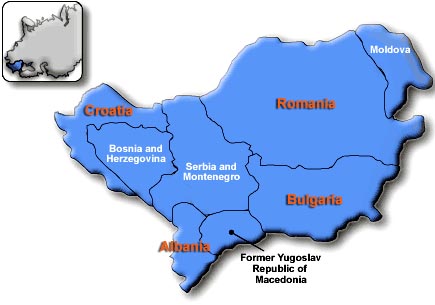Danube - vast, unexploited water-highway
 Belgrade - When one looks at Rhine from a bridge in the former German capital Bonn, one immediately thinks of a highway, with barges navigating underneath like cars running the roads, with the lighter vessels overtaking the slower one before returning to their lanes.
Belgrade - When one looks at Rhine from a bridge in the former German capital Bonn, one immediately thinks of a highway, with barges navigating underneath like cars running the roads, with the lighter vessels overtaking the slower one before returning to their lanes.
A look from the Pancevo bridge, which crosses Danube in the Serbian capital Belgrade, reveals swamps on one side, the city on the other - and an empty huge river underneath.
Unlike the Rhine - Europe's busiest river in terms of traffic - the twice-as-long Danube remains largely unexploited in terms of shipping even if it effectively is a vast, cheap and environmentally friendly highway running through 10 countries.
Though lying on the most important East-West axis for transport across Europe, linking Western European sea ports with the Black Sea, last year each kilometre of Danube carried 16 times less cargo than a kilometre of the Rhine.
Before the Balkan wars of the 1990s halted traffic on the Danube, the river was a well-used waterway with a transport volume of some 90 million tons in 1987. The volume dwindled to a mere 20 million last decade and now hovers around a modest 40 million tons annually.
The European Union has placed the development of the newly-named Pan European corridor VII, including the removal of bottlenecks on Danube by 2015, close to the top of its priority tasks.
The worst obstacles to traffic on the Danube, such as the remains of bridges NATO knocked down in Serbia during the 1999 Kosovo war, were cleared in recent years.
Shippers now want the transport infrastructure upgraded to Western standards and are particularly pressing for intermodal terminal points combining river, rail and road transport.
While constructing terminals takes time, experts say, complicated and time-consuming customs procedures that hamper cargo traffic at EU frontiers could be lifted more quickly.
It is a slow process, both in terms of infrastructure and legislation in former Communist countries of Eastern Europe.
The development of inland waterways remains on the back burner amid structural changes still ongoing in Eastern Europe, says Thomas Hartl of the Austrian waterway management agency Via Donau.
Transport there is still focused on roads and trucks, because "inland waterway transport has no big lobby behind it in Eastern Europe yet," says Hartl - though some changes are evident.
For instance, Serbia has slowly begun simplifying its border procedures, starting last April with passenger vessels, to the benefit of the booming river cruise industry on the Danube.
East-bound passengers passing through Germany's cruise hub, the port of Passau, increased tenfold over the past 15 years - experts say Serbia would also profit from a softer border.
"Less time at customs means more time for shore excursions," Joerg Rusche, director of the German Federal Association of Inland Waterway Transport told Deutsche Pressse-Agentur dpa.
There always is a catch, though - while transport companies are hoping for reduced red tape also in cargo traffic, environmentalists warn that the development on Danube could do more harm than good.
The greatest bottlenecks are often also the most beautiful nature reserves, as the Iron Gate gorge on Serbia's border with Romania. Also, while shoring and trenching secures constant water depth and width for barge convoys, each intervention interferes with nature.
Nevertheless, transport on the Danube, particularly the intermodal container transport, "will see rapid growth in the coming years," Hartl insists. (dpa)